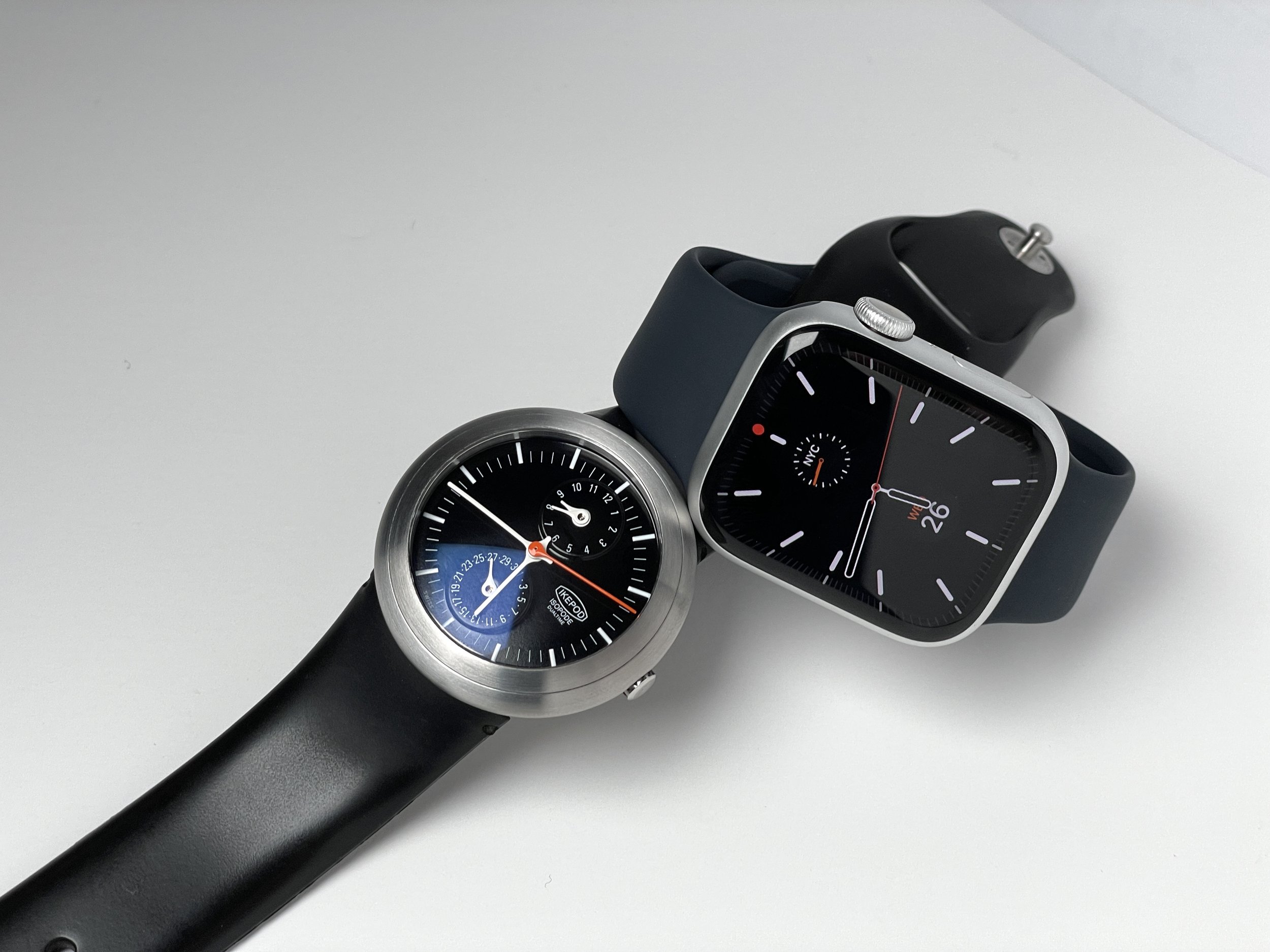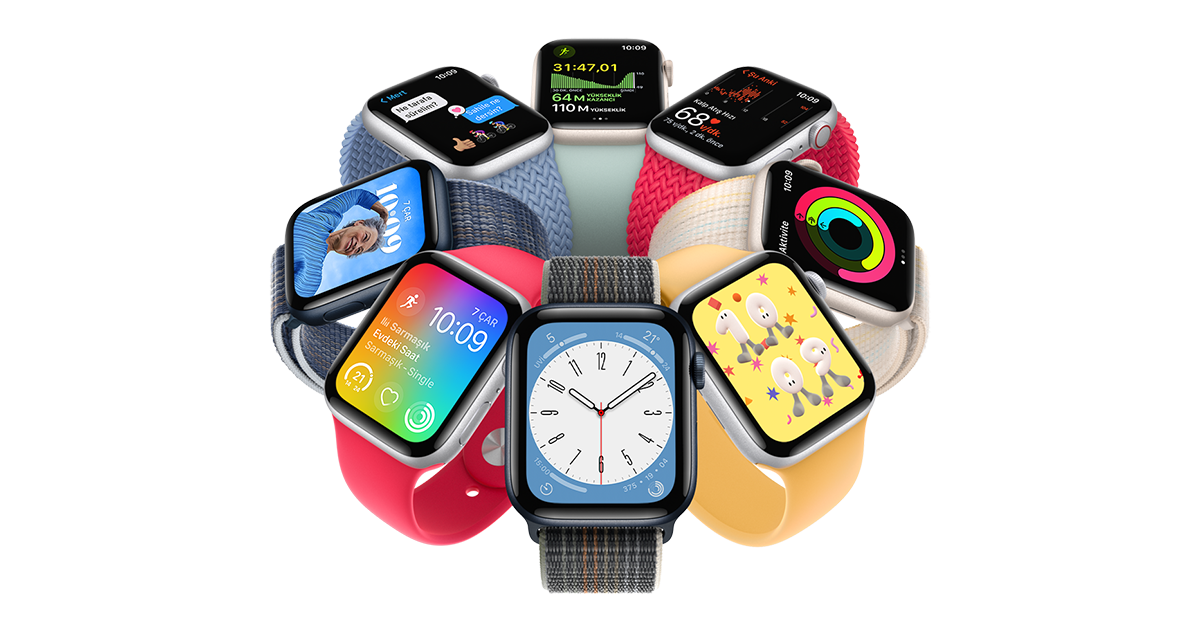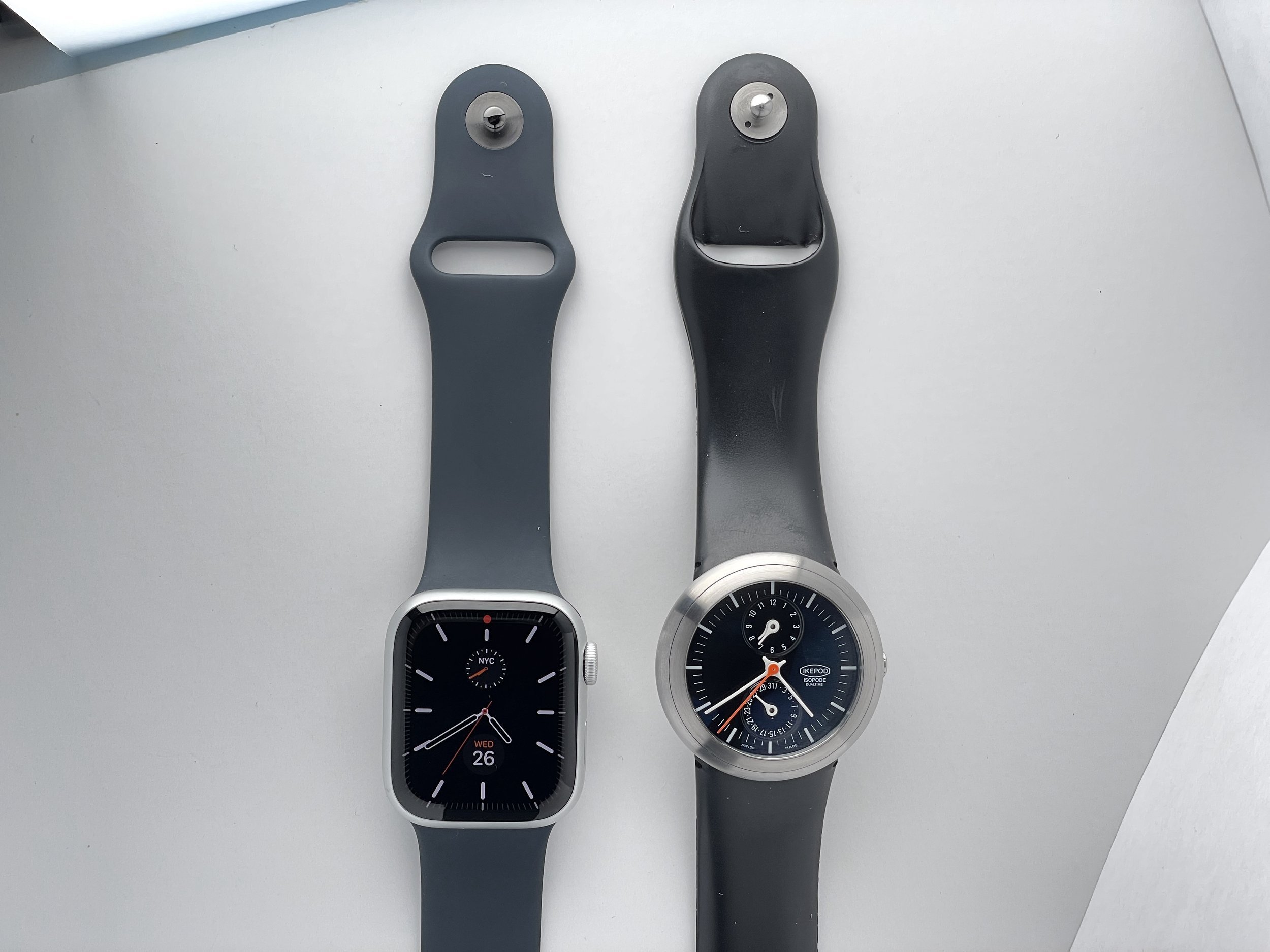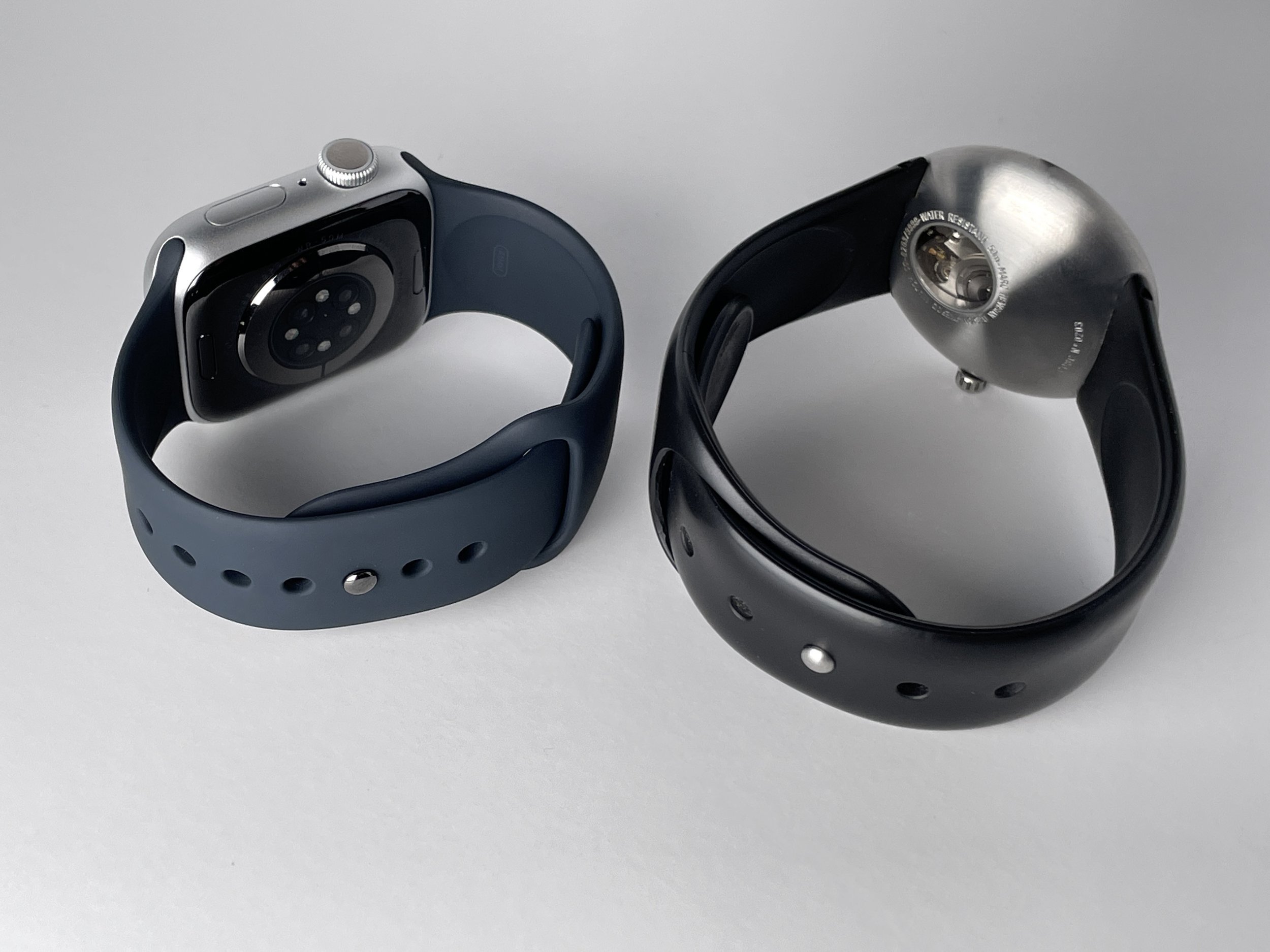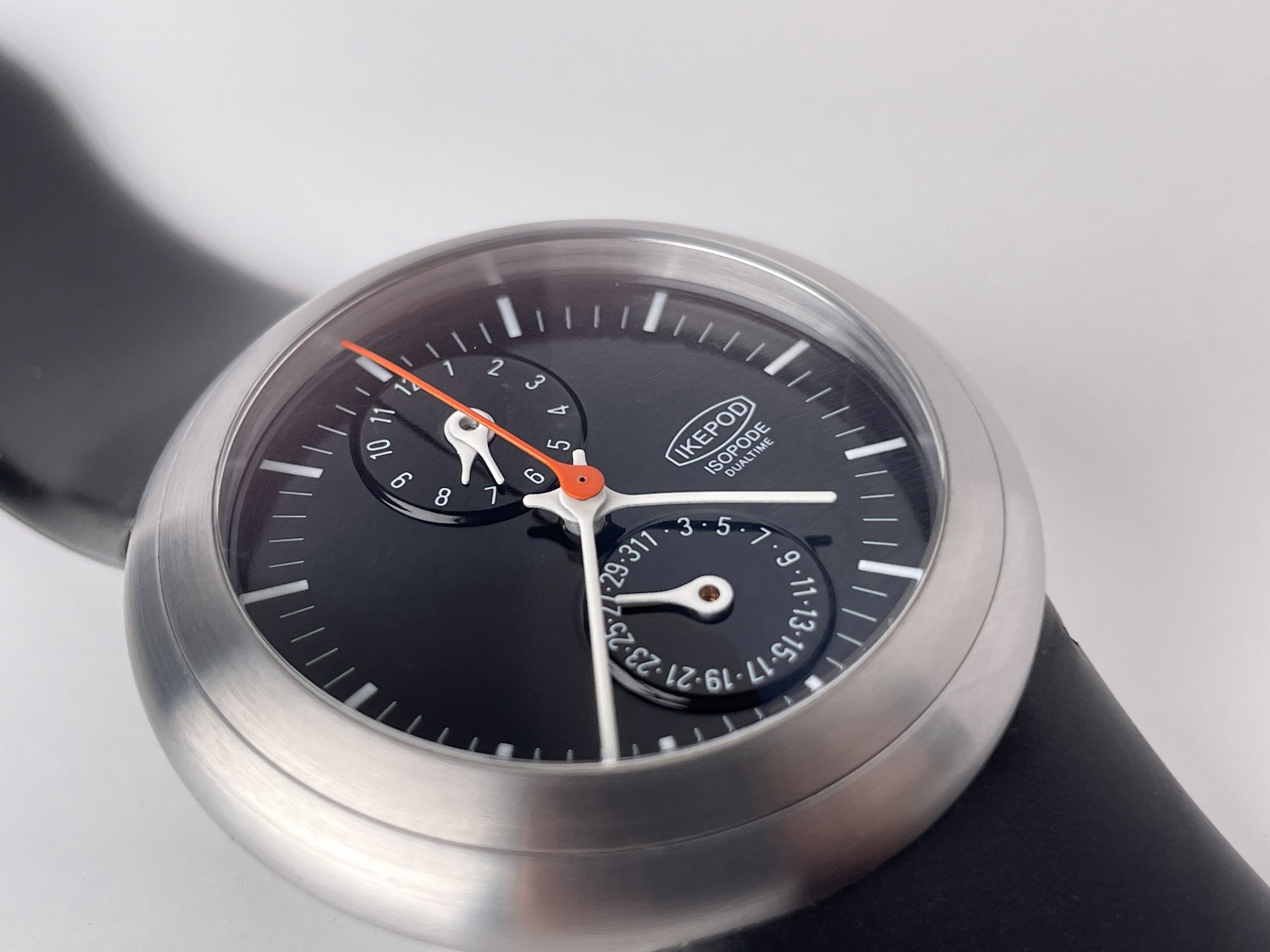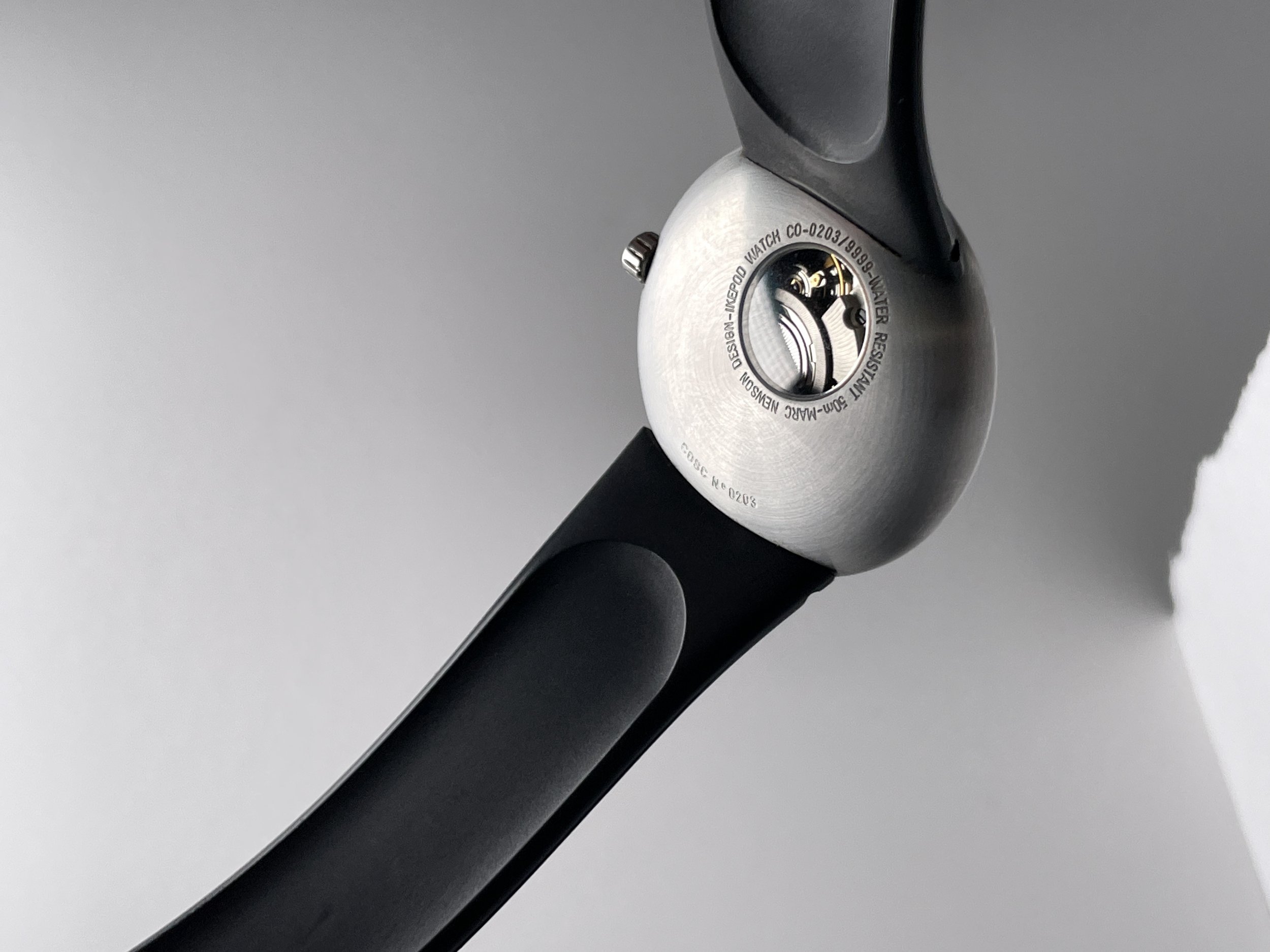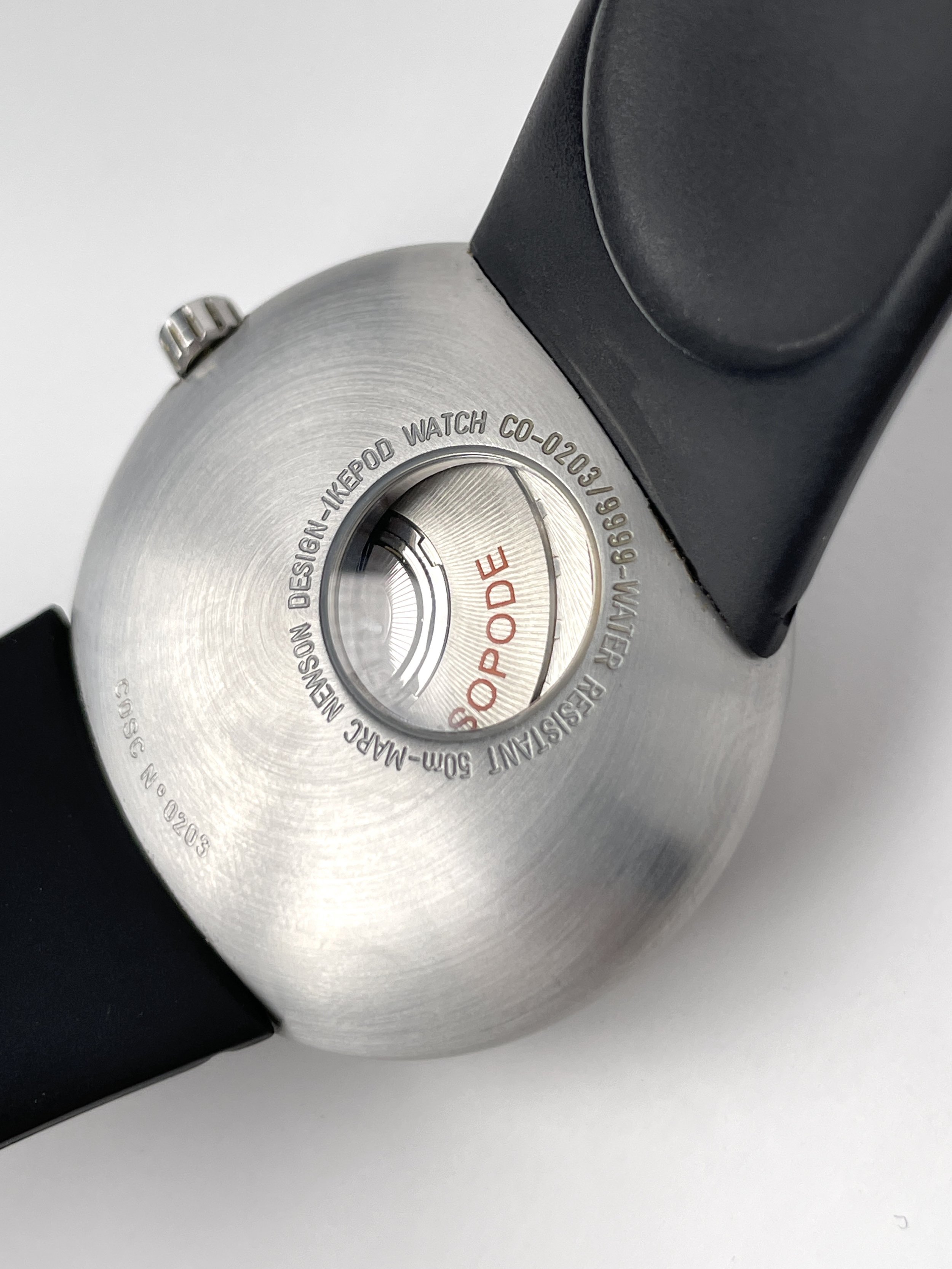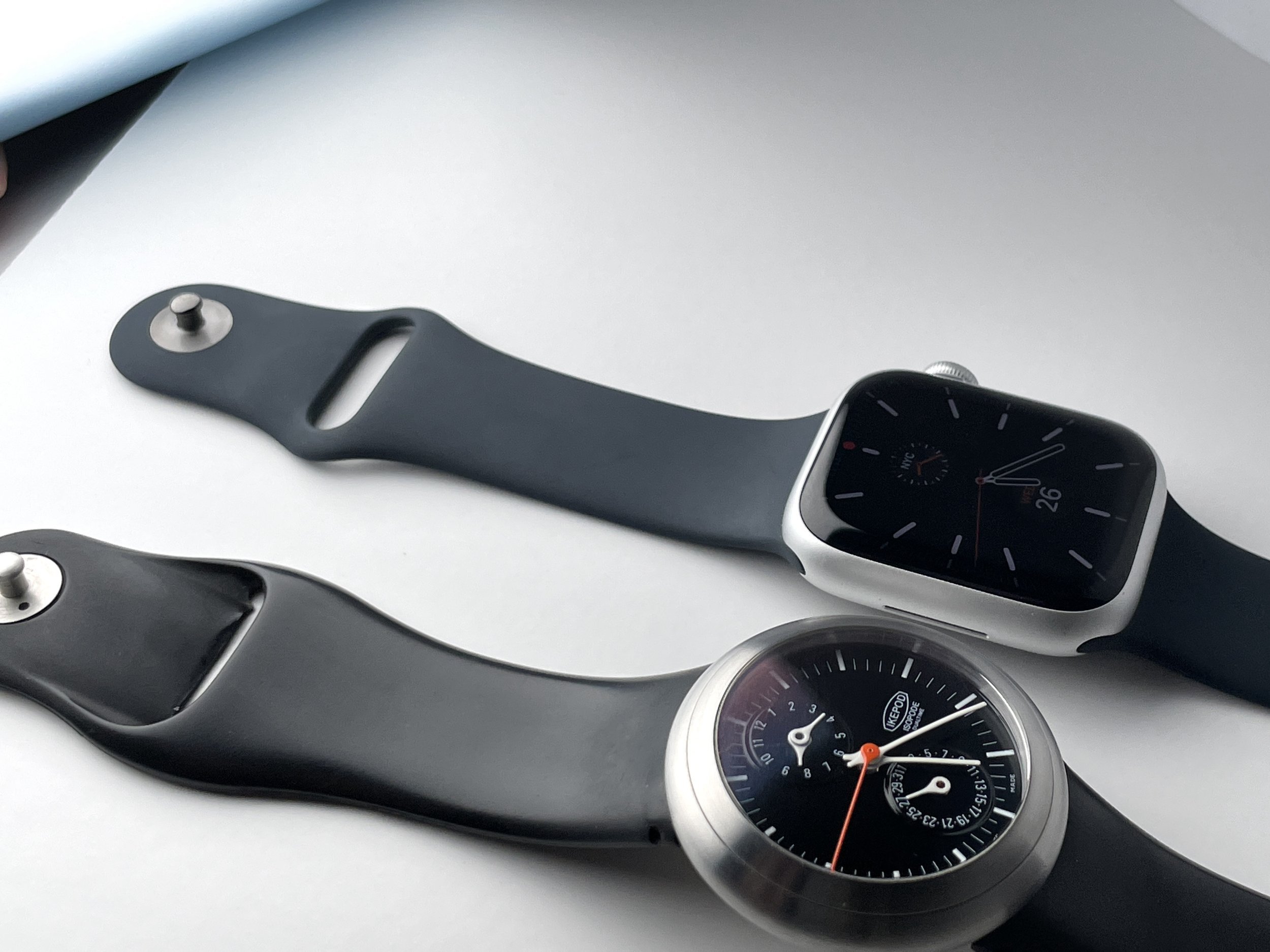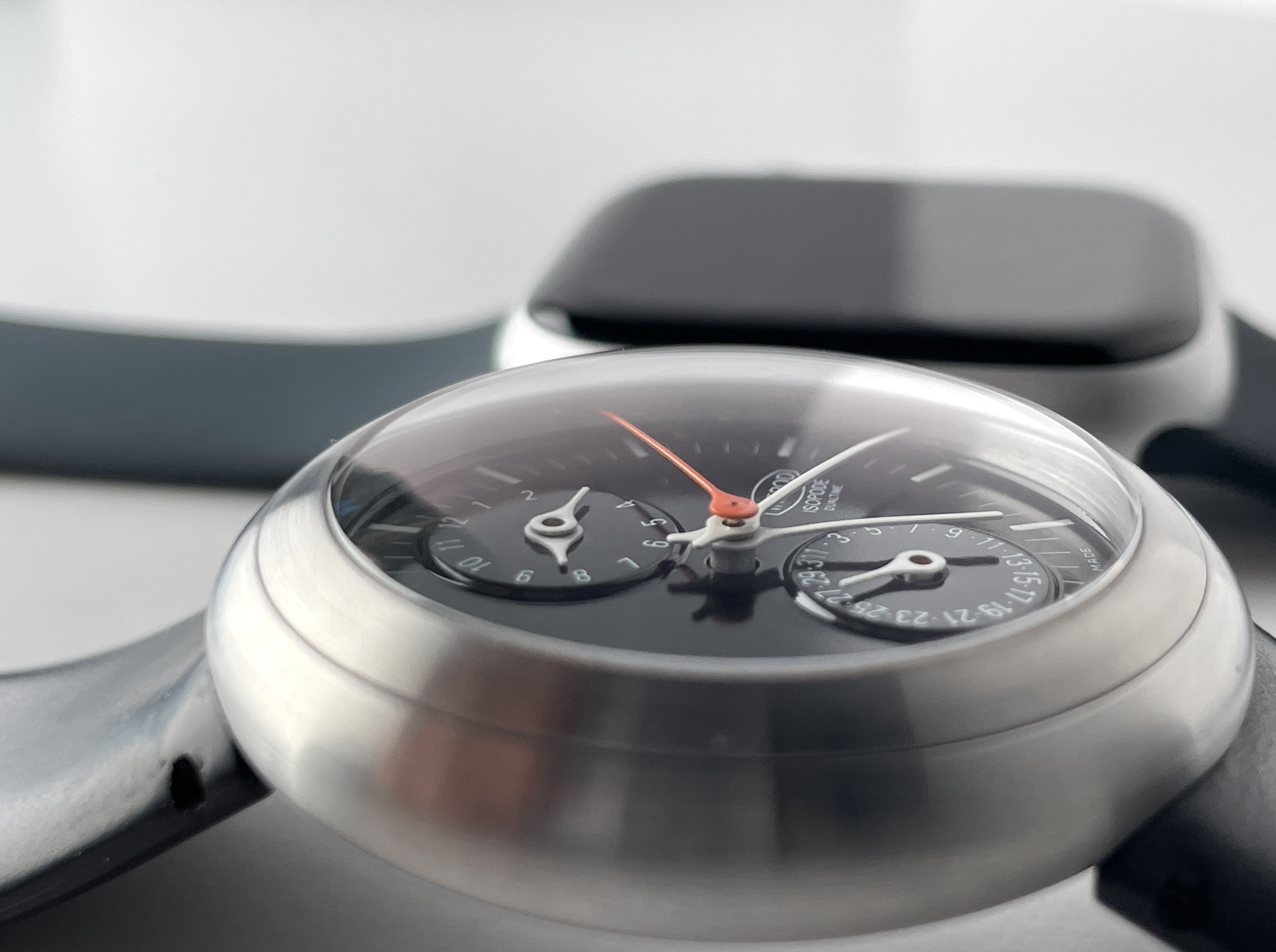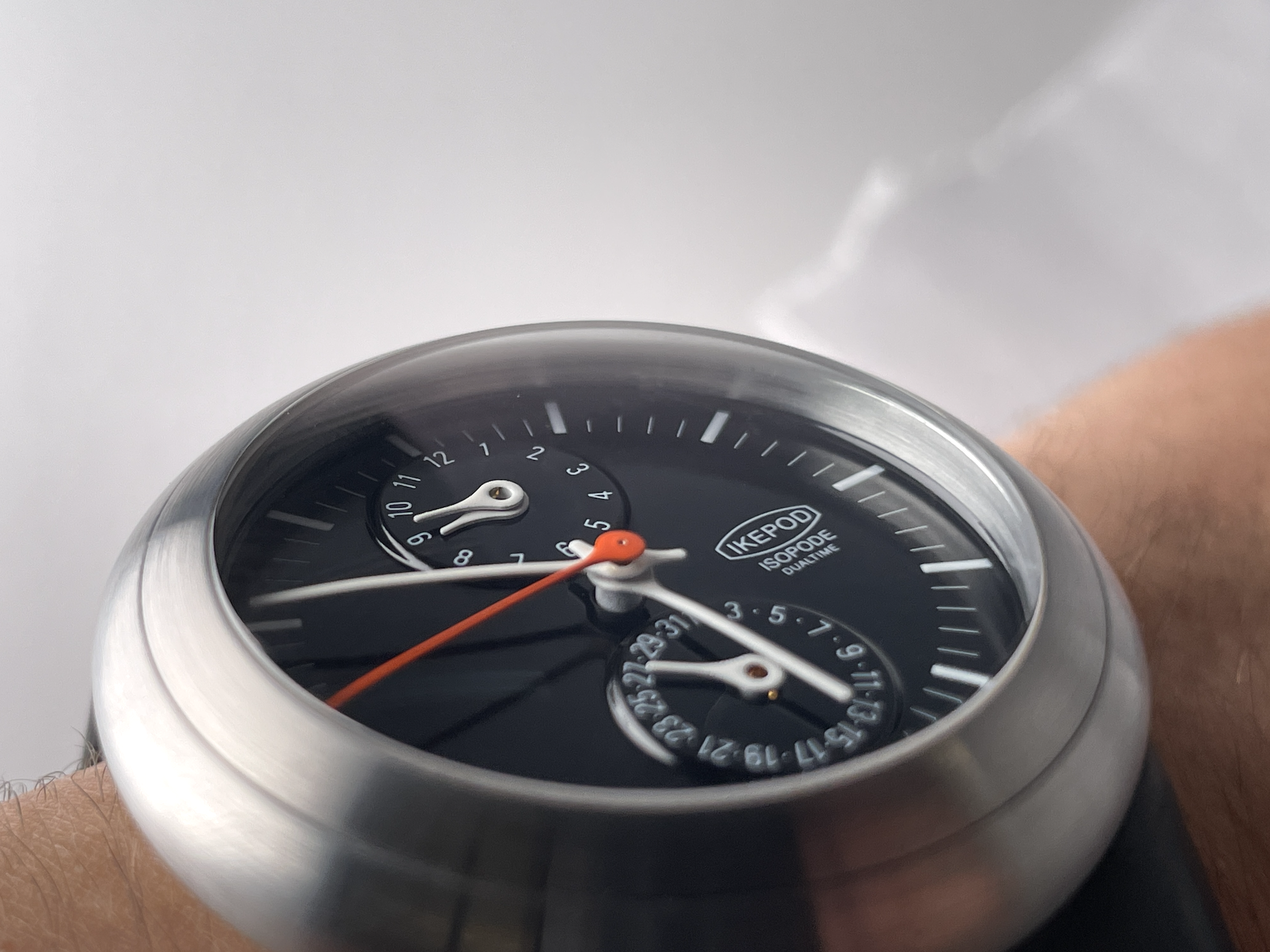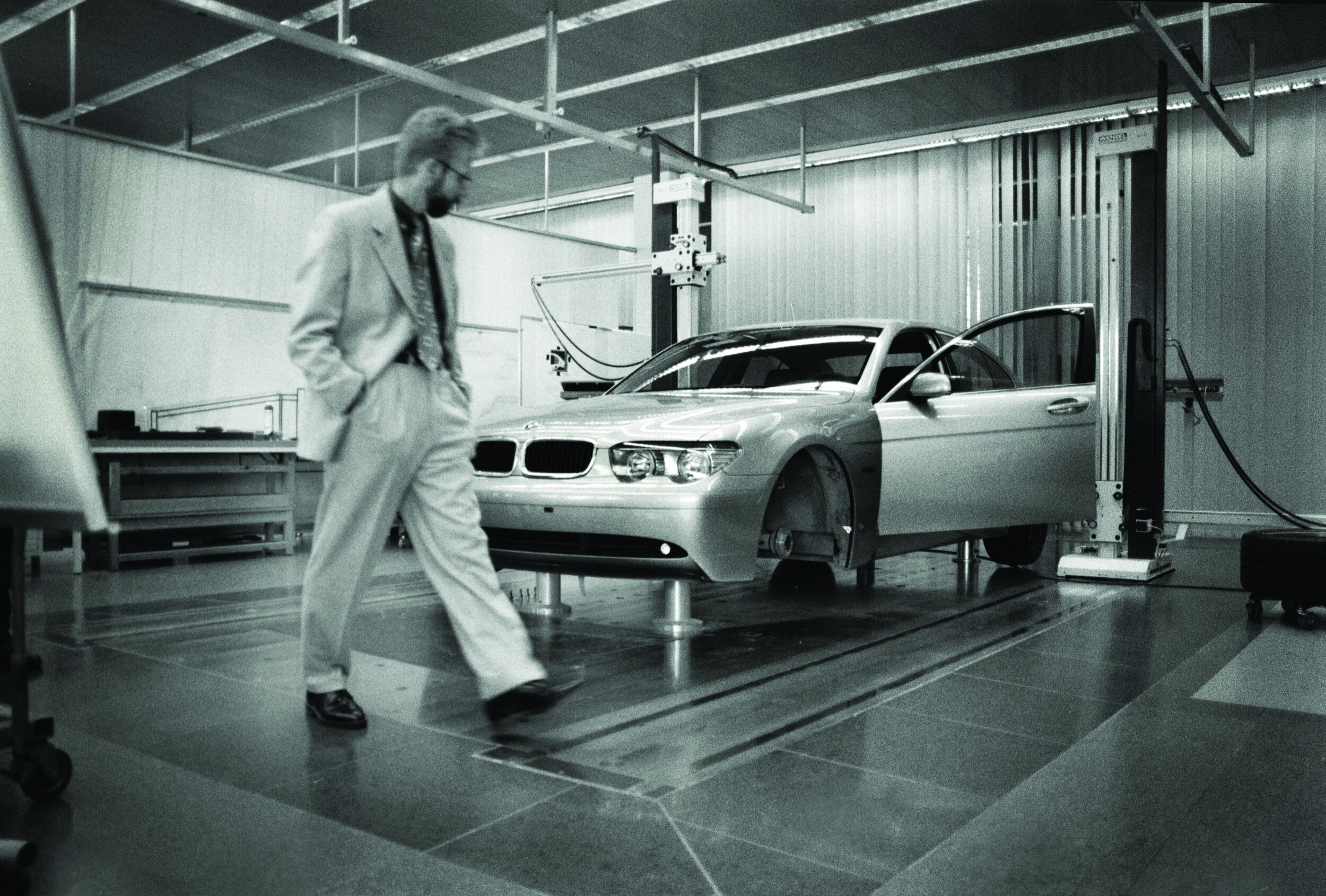The Ikepod. Apple Watch’s Dirty Secret
Two months ago, in a live-streamed presentation, Apple took the covers off of its new watch. Now in its eighth generation, the Apple Watch has established itself as the world's #1 timepiece, surpassing even Rolex in popularity.
The original Apple Watch, unveiled in 2014, marked Apple's entrance into the wearables business - and following the death of Steve Jobs in 2011, was a big test for Apple's newly bred CEO, Tim Cook.
The company had been under much scrutiny for its perceived lack of innovation in the post-Jobs era, and the watch was Apple's response. It featured an impressive slew of software and hardware implements, questionable battery life, and prices ranging anywhere from $350 to even $10,000 for solid-gold "Edition" models. Early versions received mixed reviews, and while it undoubtedly took a few years, the Apple Watch soon reached a point of maturity - and now has the rare distinction of being a virtually unquestioned industry leader in the smartwatch segment.
Upon its release in 2015, Apple was, in many ways, searching for a market. The wide variation in case and band material options marked Chief Design Officer Jony Ive's belief that the Apple Watch should make an imprint in the luxury watch space. And, although, these days Apple mostly markets the watch as a fitness-communication wearable, the design language established in 2014 has remained largely unchanged.
According to Ive, the development of the Apple Watch began in early 2012, mere months after Jobs' passing - and was, in many ways, unusual. Apple is a company that famously does not use or consider outside help, but for the watch, there existed parallel products, and it seems, a desire from the design team to further appreciate the world of watchmaking. In an interview with Hodinkee, Ive explained that Apple had even worked with seven outside experts, ranging from horologists to historians and curators.
Enter Marc Newson.
In 2014, Ive formally recruited his closest friend and legendary designer Marc Newson to the Apple design team. An eclectic choice and one that hardly fit with Apple's understated image but one that would prove greatly impactful.
Newson's first task? Help Ive, and his team translate Apple's iconic design language to a timepiece.
No doubt an unusual assignment from a company best known for making iPhones and MacBooks, Newson was, however, unlike Apple, not new to the watchmaking party.
In 1994 alongside Swiss businessman, Oliver Ike, Marc Newson co-founded the company "Ikepod," a new Swiss watch brand that would quickly achieve a cult-like following. The name? A combination of Ike's last name and the word "pod," a signature shape of the brand's timepieces.
The watches themselves were stunning and completely contrarian to what one might expect to see from a Swiss watchmaker. One might even go so far as to describe them as little UFOs. Their distinct shape and large size caught the mood of the moment perfectly. And despite the brand's relative demise in 2008, Ikepod's charming and beautiful watches proved very successful.
Yet, it wouldn't be until 2014, when Apple called on Newson to design their new watch, that the Ikepod's true legacy would be cemented.
Ikepod x Apple Watch.
The watch pictured below is an Ikepod Isopode; it was the 203d Isopode ever made and was produced some time in 1999. This particular Ikepod is in remarkably excellent shape and is what watch nerds (myself included) might call "New Old Stock," meaning that nobody has ever worn this watch since the day it was made.
The result is that this 23-year-old watch appears nearly blemish-free.
And sitting side by side, it is impossible to overlook the similarities between Newson's Ikepod and even the current-generation Apple Watch.
So similar are the two watches that it would hardly shock one to learn that the Apple Watch is built off of many Ikepod design elements. So much so that Apple, a company famous for its secrecy, purchased design patents for many of the Ikepod's standout features.
Most obvious is the now-iconic rubber strap; Apple calls this a "Sport Band," and it has been a defining characteristic of the Apple Watch since the very beginning.
As seen in the sketches below - this design saw its first appearance more than 22 years earlier in Newson's early Ikepod ideations. The strap itself is instantly recognizable to anyone who's ever seen an Apple Watch, and it remains virtually unchanged from its Ikepod roots. The minute differences, though, are fascinating. All Ikepod rubber straps came "flavored" in either vanilla or licorice scents. Shockingly, despite being over 23 years old, my Ikepod's strap still lets off slight hints of vanilla, it might seem like a dumb gimmick, but when compared to the Apple Watch's seemingly chemical-smelling rubber, you do appreciate why this decision was made.
Other similarities are less black and white but, in many ways, all the more satisfying. Ikepods are fantastically unique watches due in large part to their immensely cohesive and uncompromising form. Unlike most mechanical watches, the Ikepod's internals are accessed from the front, culminating in a slight part line offset from the main crystal.
This lugless design allows for a gorgeous uninterrupted steel case that gives Ikepods their unique shape and UFO-like presence. The resulting sandwich of steel, sapphire crystal, and rubber makes for an incredibly endearing form - one which is far more approachable than most other high-end watches.
All this culminates, though, strangely enough, at the back - from this angle, the beautiful sweep of the Isopode's steel case is unbelievably satisfying. With the watch's build number, mine being #0203/9999, surrounding an offset window into the movement's internals. Almost as if another world, the tiny details make this incredibly complex mechanical movement a piece of wonder. One could sit and stare through the miniature porthole for hours and never cease being satisfied.
It's these subtleties that are undeniably evident in the Apple Watch's design. With the curved display glass and back case being the most apparent.
Most noticeable, though, are the differences in quality you feel. We rarely, if ever, think of Apple products as being poorly made, and for good reason, they aren't. But the Ikepod is a rare instance in which we can compare apples to apples (no pun intended). The standard Apple Watch Sport Band, for instance, is noticeably thinner and far less substantial-feeling, almost one-dimensional. While the Ikepod's band is far thicker and curved towards the back, giving a greater feeling of security on the wrist.
And while its hardly fair to bemoan the quality of a $399 watch when comparing it to a handmade Swiss example, the Apple Watch, despite its incredible technical prowess, simply cannot match the satisfaction of wearing a true mechanical watch. It's something I never appreciated before owning one, but wearing an object so complex as an Ikepod or any mechanical watch gives you a tremendous subconscious appreciation for the work that went into creating it—taking off my Isopode and strapping on an Apple Watch for the first time in years left me with a strangely hollow feeling - almost as if I was suddenly missing a part of my body.
It's a strange thing, really; as our digital devices become more and more convenient, we lose a degree of tactility, and pretty soon, humanity.
And even if technically inferior, quite soon, one begins to realize the true value of mechanical items. It seems ridiculous to pay thousands of dollars for a mechanical watch when your phone keeps the time perfectly. But it's only after you've experienced both that one realizes, as humans, we're not really interested in pure results. We want a mechanical element - it's part of our nature. And it's the same reason why people listen to vinyl records, drive manual cars, or go to plays instead of watching a movie.
Even Jony Ive, concedes that "the liberty that the Apple Watch has given us is astonishing. And because of that – it's a little sad."
I agree with Ive here, and I find it fascinating and equally refreshing that the man responsible for much of our modern world recognizes what this great liberty has lost us. It raises new questions, ones that ask if ultra-efficient digital devices have as much a future as we'd imagined. And perhaps if a more analog world is in the cards, one that focuses more on tactility and experience than ultimate efficiency?
Continue Reading
